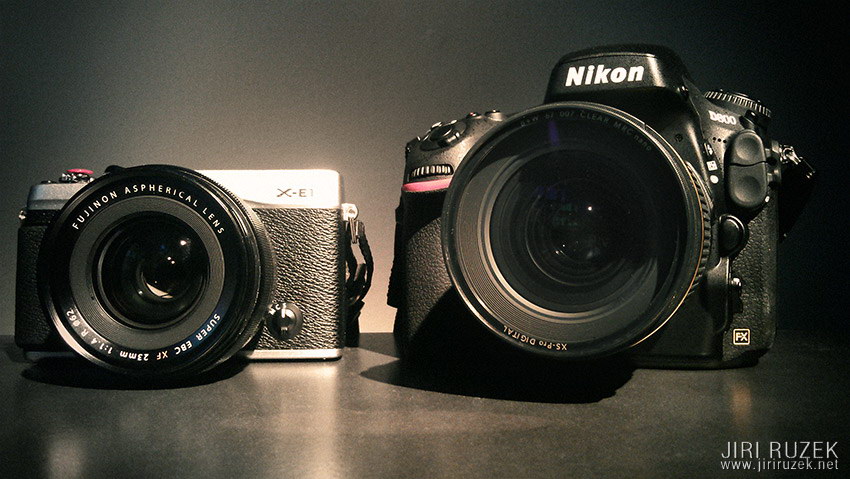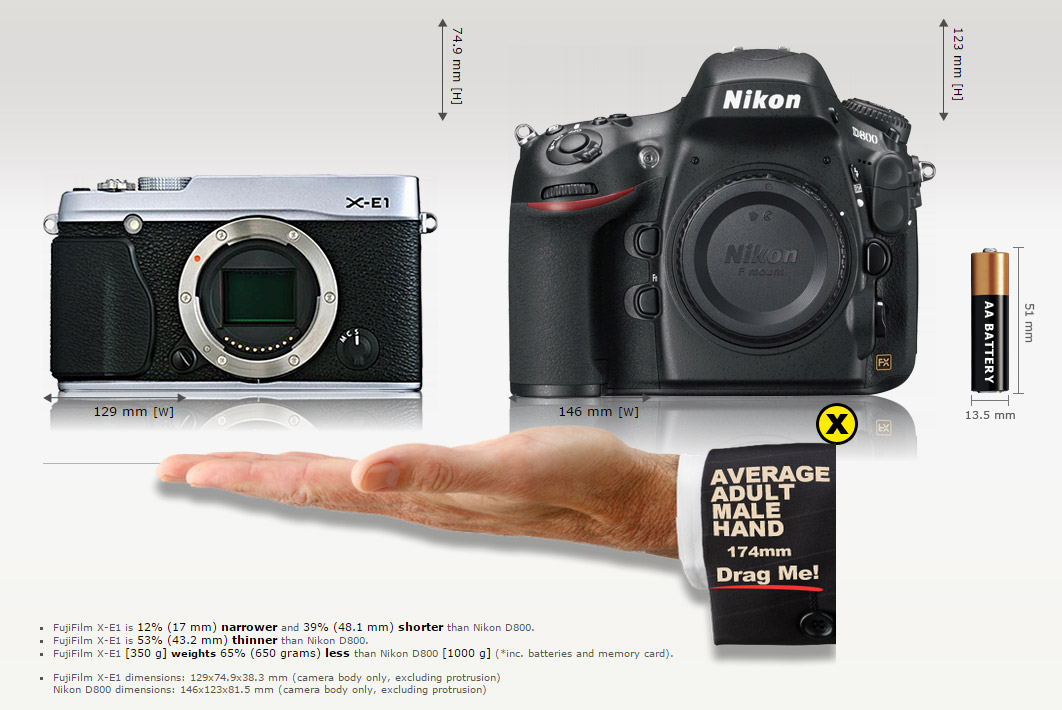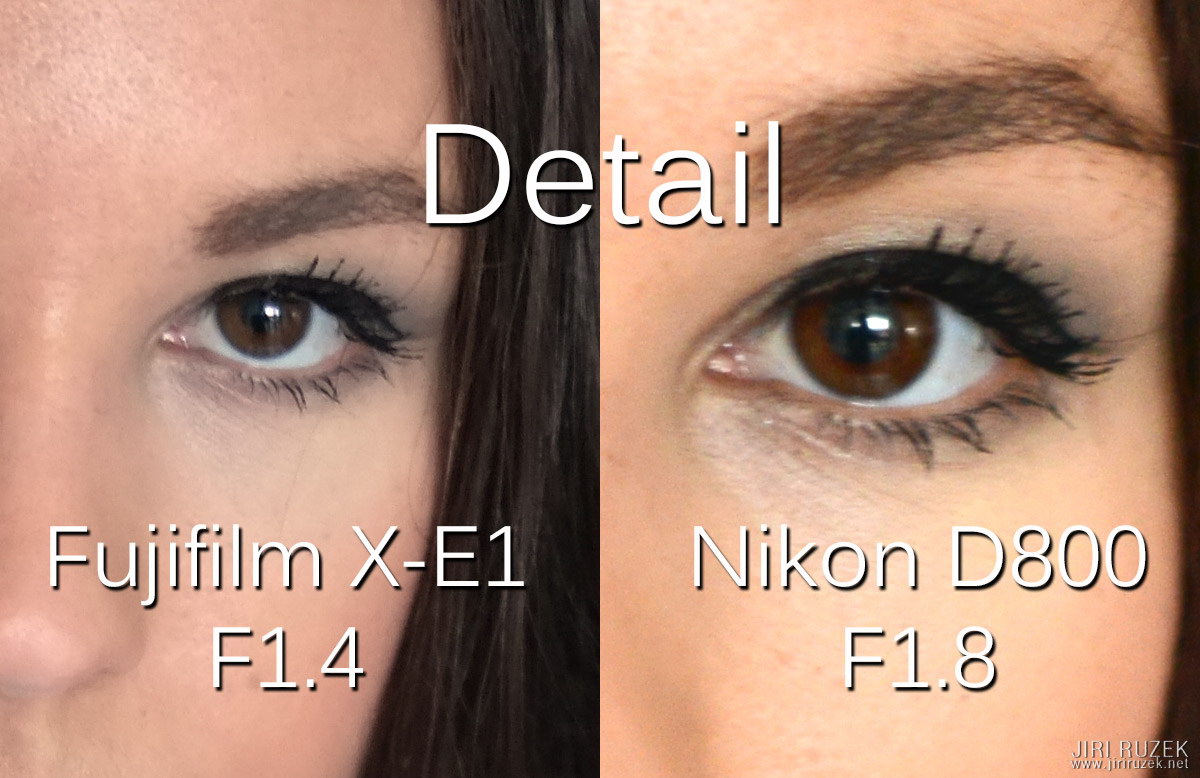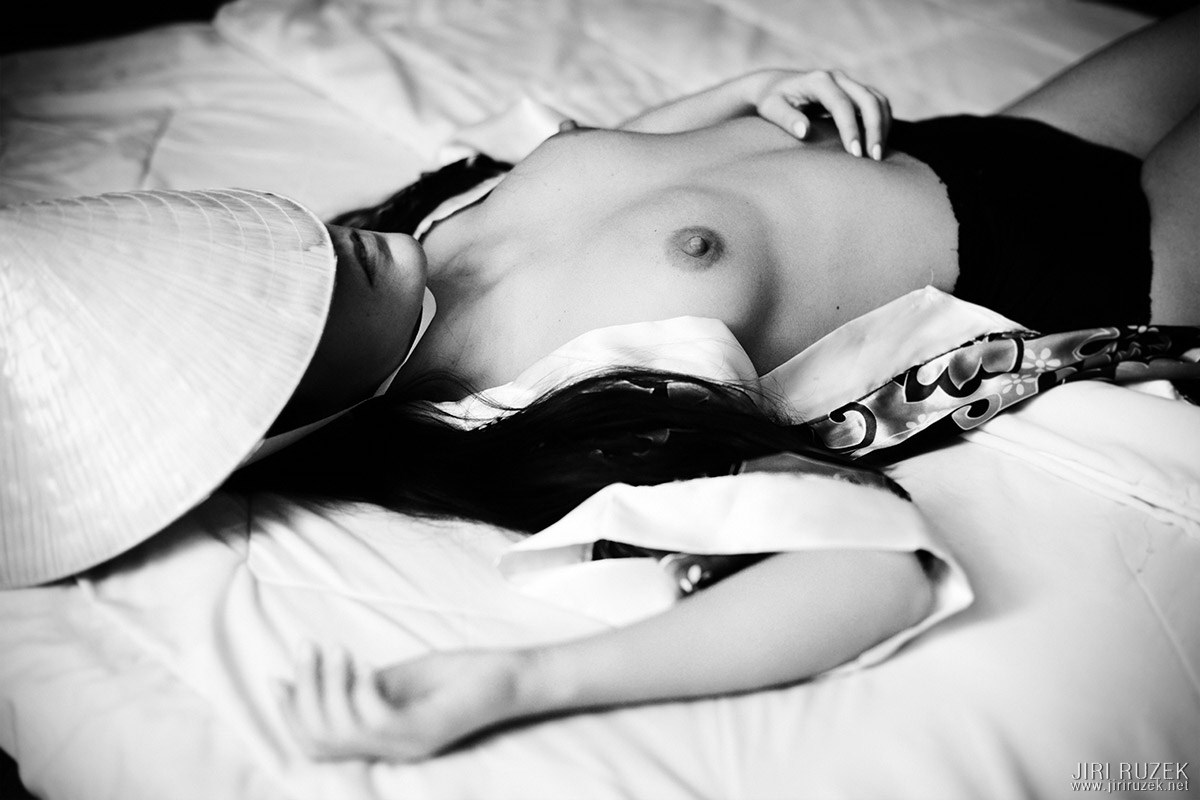
Fuji X-E1 vs. Nikon D800 - David and Goliath
- Details
- Category: Latest News
- Created on 03 December 2014

So why did I do something like that? No mystery. I had the famous Nikon D800 over one week at home and because it is almost exactly one year when I sold my old D700 and bought Fujifilm X-E1, I wanted to try it. The D800 would be definitely my next step in the Nikon line, so I also wanted to know how big difference is between those two cameras - the one I bought and the one I didn't buy.
What benefits would I get in D800 against D700? Full frame sensor (no change), giant 36 megapixel resolution instead of the current 12, a high quality video (instead of none). And again, over € 2000 investment into the camera body.
It is well known that I chose a small mirrorless camera Fujifilm X-E1. Investments (the body) was below € 500. The camera has an APS-C sensor with 16 megapixels resolution, its video is usable, but it's not the pride of X-E1. The cameras are totally different, how could I compare them?
But I had to do it. This urge to tinker with it and maybe even humbly admit that perhaps you might be elsewhere. Or not?
Fuji is slow
My original intention was to focus mainly on comparisons of their focus speed. I know that DSLR cameras with high quality lenses are generally faster than CSC cameras, but there is the myth that the Fuji X cameras are hunting and hunting and people ask me almost every day, whether they are actually usable also for something else than a sleeping model or not. That's why I decided to perform a comparative test, whose aim was not to somehow prove that the two cameras are equally fast, but finally practically show how much difference it is.
I saw almost useless to try anything else because the D800 seemed to be the clear winner in almost everything. Still, I did some other tests to see how much it leads ...
Enough talk, let's do it.
Dimensions and weight
FujiFilm X-E1: 129x74.9x38.3 mm, 350 grams
Nikon D800: 146x123x81.5 mm, 1000 grams


Fujifilm X-E1 is 12 % (17 mm) narrower, 39 % (48.1 mm) shorter, 53 % (43.2 mm) lower and has a 65 % (650 g) less weight than a Nikon D800.
Source: CameraSize.com.
Point for Fuji - but in this case it was clear and easy, come on.
Price
The lowest prices I found (November 2014) in the Czech Republic, the average prices are by about € 50 - € 100 higher.
Fujifilm X-E1 - € 490
Nikon D800 - € 2270
Second point for Fuji, but again a known fact.
Sensor
Full frame - the holy grail of photographers. And only one year ago also for me. In the past, a full frame sensor was not only about a smaller depth of field, but also about a totally different picture quality. Time is changing ...
Nikon D800, of course, has a full frame sensor, Fujifilm X-E1 as (yet) all Fujifilm X cameras is equipped with smaller APS-C.
Point for Nikon.
Resolution

Nikon D800 - 36 megapixels
Fujifilm X-E1 - 16 megapixels


At first glance, clear victory of Nikon. The image from D800 is 2,25 times larger than the one from X-E1. But this is also a frequent subject of polemics. The huge D800 resolution is deterrent for some photographers. What is the point? Proponents reply that, for example, you can print big enlargements or that you have greater freedom in cropping your photographs - yes, more than two X-E1 photos fit into one D800 photo. Opponents argue (and I agree with them) that you can make big enlargements from much smaller resolution.

Another opinion against is the data size. An average JPG file from the D800 has about 12-14 megabytes, RAW file around 40 megabytes. JPGs from the X-E1 are mostly under 5MB and RAWs around 15 megabytes. This distinction is obviously visible at the time of copying files, the space usage on cards and disks, the demands on computer performance etc.
And further, perhaps the most serious argument against is that the electronics ran off the optics, because the current lenses are not capable of such resolution quality. Supposedly, they manage a resolution of approximately 25 megapixels.
Leaving aside these polemics yet and let's face it ...
Second point for Nikon.
Score at the moment - 2:2.
Image quality
This section must be split into two, you you understand. The first part will be about the photos in good lighting conditions, ie so that I can maximize the potential of both cameras.
I photographed the same scenes with the same or very similar settings and tried to use similar lenses on both cameras. When I had a Nikon 28 mm/F1.8, I chose Fuji 23 mm/F1.4 (equivalent to 35 mm, I did not have anything closer), and against of Nikon 50 mm/F1.4 I used Fujifilm 35 mm/F1.4 (equivalent to 52.5 mm) and in one case 56 mm/F1.2 (85 mm equivalent).

The model was photographed with a wide open aperture. Both not edited (and not sharpened) photos provide almost identical picture quality, and both seem to be beautifully sharp (I have the focus point always on the eyes).

After zooming to 100 % the D800 photographs are significantly worse. Is it a motion blur? No, it is not. Bad focus? No. The truth is simple, the Nikon 28 mm/F1.8 lens is horribly soft at F1.8.


For further experiments, I used Nikon 50/1.4 versus Fuji 35/1.4 and 56/1.2. When shooting with the widest aperture are the results from the 50/1.4 much sharper than the 28/1.8, but you still may notice that Fuji lenses are a bit sharper. It also seems that Nikon lens is more prone to chromatic aberration.

After closing the aperture on F4.0 sharpness of photos was significantly improved. At the aperture F8.0 every hair is sharp. And in a giant 36-megapixel resolution. Nice. But almost unusable at wide open aperture.
Note: I was told that the lens 50/1.4 is not recommended for D800. Recommended lens 58/1.4 is said to reach much better results. The results here, of course, relate only to the two lenses mentioned above.
Point for Fuji - I'm sorry, but Fujifilm XF lenses are beautifully sharp at the widest aperture.
High ISO and noise
Both cameras boast about their exceptional image quality in low light conditions when it is necessary to set a higher sensitivity (ISO). When you shoot on film, you can actually buy the film with a higher ISO value, ie. more sensitive to light. In the case of digital cameras it is a bit different. There is no film and the sensor has commonly fixed sensitivity, corresponding to approximately ISO 200. ISO sensitivity of the sensor does not change even if you set it to higher ISO value. You shoot pictures always at the same value, but the image signal is then amplified to match required sensitivity.
I did not photograph stepwise ISO values, I took only one photo at ISO 200 (it is in the video) and the second photo I took with a critical value of the sensitivity of ISO 6400. The photographs are "out of camera" without any noise reduction or so.

Photographs resized for internet are wonderful and they could be also printed in smaller dimensions without problem. If I say smaller dimensions, I do not mean 13x9 cm, but significantly larger prints. I can also imagine larger prints in some photography genres, ie. street photography or so. But for my genre is always good to keep the ISO values reasonably low.

Let's zoom it in ... And here came the shock. My poor X-E1 uncompromisingly beat D800. But we have yet another familiar controversy ...

The "little" extra noise will be lost due to the huge resolution. Translated, this means that if you want to print as well a big picture of the two cameras, you will need to diminish the D800 photo size (and it diminishes also the noise) and/or to enlarge the X-E1 photo (and also enlarge its noise).

I did it - I shrunk the photo from D800 to 16 MPx. Fuji still leads.

When I enlarged the X-E1 photo to 36 MPx, it still leads. The Fujifilm image quality is incredible.
(Note: compare the noise at different ISO in raw and jpg on DPreview)
Point for Fujifilm (without pardon). Score 4:2 for Fuji.
Viewfinder
D800, like its predecessor D700, has a huge and excellent viewfinder. A wonderful big window that provides an image through a mirror (hence SLR).
Fujifilm X-E1 has an electronic viewfinder. And now I should with no further explanation give automatically point to Nikon. But I can not do that, because even though I enjoyed the D800 viewfinder quality, I really missed the EVF from Fuji. Why?
Not because it would offer a better viewing experience, but quite simple and practical thing, namely ability to control exact exposure prior to shot.
Yes, there is such a procedure with the SLR - estimate setting, take a picture, check the result, you'll find that it's wrong (too much or too little light), new setting, take a picture again, check it again etc.. . With the EVF I exactly know what I will shoot before I do it.
A draw - a point for Nikon as well as for Fujifilm, a score of 5: 3 for Fujifilm.
Focus points

The technology does not allow DSLR to have focus points across the entire frame, they are concentrated just around the center. Fujifilm has the focus points over the entire frame, no need to explain the benefits. In addition, Fuji has the ability to set the size (accuracy) of its focus points in 5 steps.
Point for Fuji - 6:3
Focus speed
Without delay, I wrote it at the beginning, I admit that, of course, Nikon is the winner. You can see in the video how big or small the difference is. D800 is not fast, it is immediate. It virtually doesn't know a delay. Neither X-E1 is not as slow as some people think, but there is a difference in favor of Nikon. I focused as fast as possible to five places - Nikon won with little margin. On the second attempt I focused and photographed the same five places. The difference was significant. Nikon managed it practically at the same time, Fuji had a delay between the focus and shot. Check out the video ...
Point for Nikon. Score 6:4 for Fuji
Fujifilm leads, but I give a point to Nikon for excellent video that I have not tested it and another point for a great battery life.
Final score - 6:6
I would like to add a point to Fujifilm for its shutter speed dial and aperture ring, but this is a friendly match. Indeed, it would be easy to add a few points to both cameras for this or that. Notwithstanding this test Nikon D800 remains one of the best cameras we've ever had. Great respect. No conclusion today, do it yourself.
... but the aperture ring, it is something sooo fantastic ... ok ok, enough for today :)
Buy Fujifilm X-E1 on Amazon:
.com .co.uk .ca .de .fr .it .es .co.jp .cn
Buy Nikon D800 on Amazon:
.com .co.uk .ca .de .fr .it .es .co.jp .cn
And by the way, sorry for my imperfect English :)




